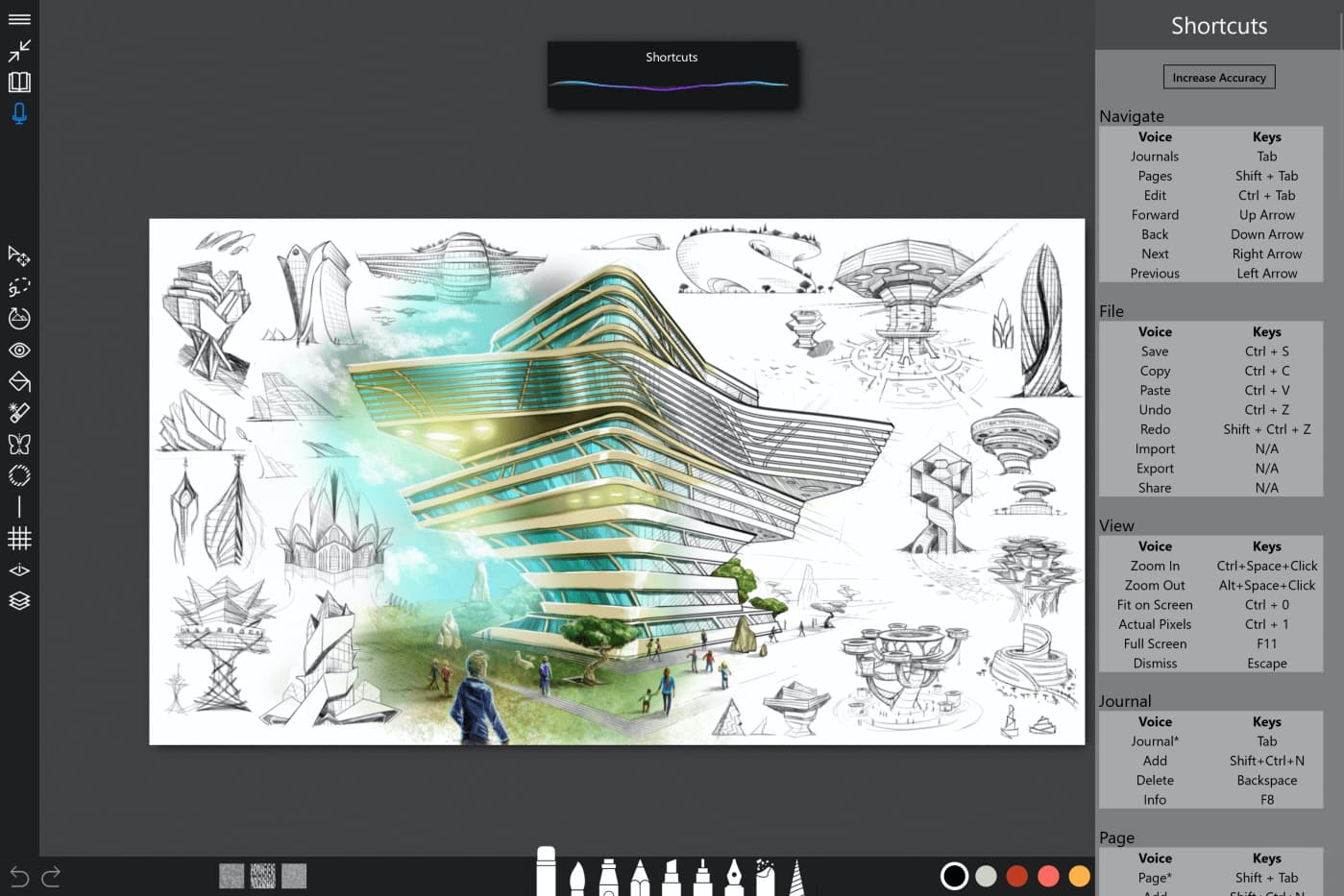Shortcuts in a Modern Input World

One of the most ubiquitous words involved in technology today is “intuitive.” It is the guiding principle of modern hardware and software design, the creation of user-friendly technology. No feature or interaction illustrates the power of intuitive modern design better than touch input. Instead of navigating a mouse over an icon and clicking, just tap. Instead of a scroll wheel or using a dropdown menu of predefined zoom percentages, just pinch. The power here is in the simplicity, users know how to interact with the hardware and software almost instinctively. However, this often comes with a cost: a lack of sophistication. Traditional feature dense desktop programs have a difficult time balancing their feature-rich environments with the usability users desire.
Because of this precariousness, modern apps have been forced to become more sophisticated while maintaining that guiding principle of intuitive interactions. Hardware has facilitated this change by adding inputs like stylus, giving users finer levels of control. Device specs have improved to the point where programs can run side by side with the apps working to replace them. Despite all of this, there is one subtle yet crucial component that modern users still sacrifice in the name of intuitive interactions:the keyboard shortcut.
Most people are familiar with Ctrl + Z and Ctrl + Shift + Z for undo and redo, but this is only the tip of the iceberg. Any professional level program will have dozens if not hundreds of shortcuts designed with one purpose, to speed up workflow. For modern apps to forsake this, would be to concede the power users to desktop programs. The most common method for emulating shortcuts has been gestures. Beyond the aforementioned pinch to zoom and tapping, most gestures are unfortunately not intuitive! Three, four, five fingered taps, scrubs, or pinches are never used and are difficult to learn. Because of this, the industry has all but abandoned them.

This is where an often misused or overlooked input has the potential to fill the void: voice. To date, voice input has only gained traction in the personal assistant arena. Cortana, Alexa, and Siri all have millions of users based around simply having a conversation with your device, but this is not the ideal interaction for production software. Shortcuts require specific commands to speed workflow and keep the creative focused on their work, not digging through menus. This is where voice can replace the keyboard.
Once voice input is viewed through this lens of shortcuts, the potential is palpable. Discovery is the most difficult barrier to adoption, dictating reduces the learning curve dramatically. Instead of an arbitrary gesture or combination of keys, the creator can simply speak the command. How much more intuitively can one open the color picker, than by saying “color picker?” Instead of a three finger tap to undo, just say “undo.” In the world of software shortcuts aren’t for the lazy, they are for the productive and voice has the capability to provide the most intuitive shortcuts in software’s history!